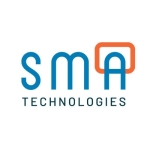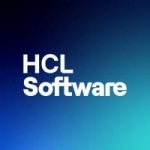What is our primary use case?
We have several corporate solutions that need to be integrated with our ITSM products.
Automic facilitates integration to ensure the correct execution of ITIL process workflows. The first was to create service offerings for provisioning virtual machines in both private and public cloud environments.
The creation of virtual machines would have to contemplate the current process of changes, releases, and configurations. Our service catalog should make service offerings available; these involved diverse operating systems, different hardware configurations, and some functioning web services.
An approval process would also be contemplated, where the main steps would be the registration and closing of the change tickets, as well as the registration and deactivation of the generated configuration items.
How has it helped my organization?
We have several solutions, but we opted for Automic following the natural evolution of CA Process Automation. The fact that it has native integration with ITSM solutions was also an important factor in the decision. Due to the various possible integrations, all of them need to be in accordance with the ITIL process. This would facilitate the actions that would come in order to implement a DevOps culture in the organization.
The service support is acceptable and response times are fast, whether from the manufacturer itself or from partners.
What is most valuable?
Due to the fact that we have several solutions to be integrated into the ITSM processes, the possibility of having multiple client areas is important because it favors organizing integrations and automations.
We have other products from Broadcom (CA Technologies) in operation, and integration with these products was very smooth. It integrates easily with CA Service Desk Manager, CA Service Catalog and CA Process Automation, and more.
Adding that to the various packages and plugins available at Marketplace, the learning curve to make automation work was very fast.
What needs improvement?
We found that some Actions Packs and plugins do not have documentation, are incomplete, or are of poor quality. In most of the packages available, it took time to study and gain knowledge of the features and resources due to poor documentation. This time could be reduced if the documentation was more complete.
If the documentation is not well built, there will always be extra time for testing and some of these generate doubts that turn a simple job into something complex. With the project's schedules in progress, it is difficult to set deadlines, even if they are adjusted for more.
For how long have I used the solution?
I have been using Automic Workload Automation for two years.
What do I think about the stability of the solution?
The product demonstrates excellent stability, regardless of whether the installation has high availability or not. We have not seen any problems in this regard.
What do I think about the scalability of the solution?
It is a product that scales easily, but with a short aggregate in its version with high availability.
How are customer service and technical support?
The most experienced support team is international. Some professionals at the time of implantation are no longer available. The service responds quickly to doubts and so far we have had no difficulties in this regard.
Which solution did I use previously and why did I switch?
We have also used CA Process Automation, MS System Center Orchestrator, and Control-M.
How was the initial setup?
Complexity only exists when installing high availability. Support from the manufacturer was required.
What about the implementation team?
It was through a Broadcom partner. The team was very experienced in the product, including with use cases in a company in the same area in which our organization operates.
What was our ROI?
We don't have enough time to calculate ROI yet, but we are optimistic.
What's my experience with pricing, setup cost, and licensing?
There are different licensing fees for cases where high availability is important. There is also a certain complexity in this type of installation.
Which other solutions did I evaluate?
We only evaluated Broadcom (CA Technologies) products.
What other advice do I have?
Overall, the user experience is extremely good. The monitoring and troubleshooting features are rich and with the dashboards and other features, automation work is made easier.
Which deployment model are you using for this solution?
On-premises
Disclosure: My company does not have a business relationship with this vendor other than being a customer.
















